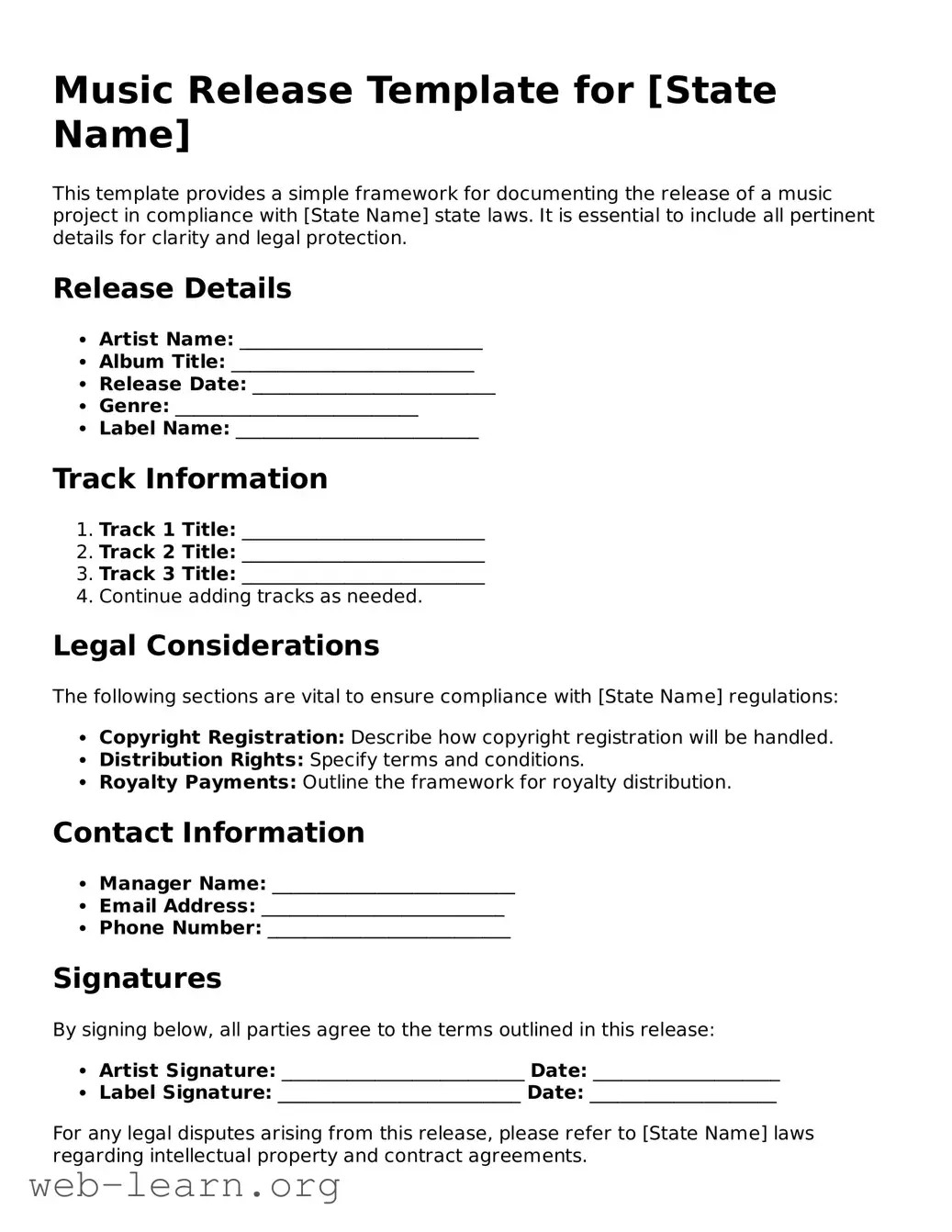Filling out a Music Release form can be a straightforward process, but many individuals make common mistakes that can lead to complications down the road. One significant error is failing to provide complete contact information. Without proper details, it becomes difficult for involved parties to communicate effectively regarding the music project.
Another frequent mistake is neglecting to specify the rights being granted. A release form typically outlines whether the artist is granting exclusive or non-exclusive rights. Omitting this crucial information can create confusion and potentially lead to disputes later on.
People often forget to sign and date the form after filling it out. A signature confirms acceptance of the terms outlined in the document. If a form is unsigned, it could render the entire release invalid, leading to legal challenges.
Additionally, people may overlook the importance of clearly identifying all parties involved. Failing to list each contributing artist, producer, or writer can complicate the approval process and may result in disputes over authorship or rights.
Some individuals incorrectly assume that a verbal agreement suffices. Relying on oral assurances can lead to misunderstandings, so having a signed release is essential to ensure that everyone is on the same page.
Missing details about the specific project or recording can also be problematic. A release form should describe the music clearly, including the title and any pertinent metadata. Without this information, the context of the release may become murky.
Inconsistent terminology is another pitfall. If different terms are used within the form regarding rights or responsibilities, it can create ambiguity. Consistency ensures clarity and helps avoid potential legal interpretations that could differ among parties.
Some people fail to include appropriate dates relevant to the release. Inaccurate or missing dates can create confusion about the time frame of rights granted, possibly leaving creators vulnerable to unauthorized use.
Error in language can also lead to significant misunderstandings. Using complex terms or vague phrases may result in misinterpretation. It’s important to use clear and accessible language to avoid confusion.
Finally, many individuals don’t seek legal advice before submitting a release form. Legal nuances may affect the outcome of a music project, and professional guidance can help prevent mistakes that could otherwise lead to expensive disputes.
